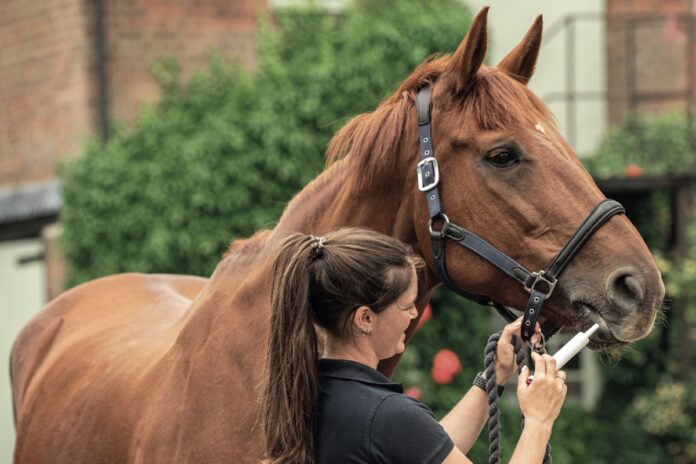Emergence of multi resistant parasite strains has potential to wreak havoc on UK horse industry
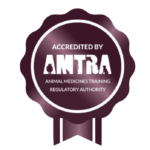
By Claire Shand of Westgate Laboratories
AMTRA is required by the Veterinary Medicines Regulations to ensure its RAMAs/SQPs undertake CPD. All RAMAs/SQPs must earn a certain number of CPD points in a given period of time in order to retain their qualification. RAMAs/SQPs who read this feature and submit correct answers to the questions below will receive two CPD points. For more about AMTRA and becoming a RAMA/SQP, visit www.amtra.org.uk
None of us wants to end up in the situation where untreatable worm burdens mean we can no longer keep horses on our land, but the developing phenomenon of multi resistant parasite strains poses just this threat.
These are parasites that have evolved to survive treatment to all classes of licenced anthelmintic (wormers) and that have the potential to wreak devastating consequences on the health of our horses and our equine businesses.
Concerns have been heightened recently by a research paper published in April 2023 confirming the first known case of ivermectin and moxidectin resistance on a UK Thoroughbred stud. These chemicals fall into a class of chemicals known as macrocyclic lactones.
The study highlights the uncertainties around future control of cyathostomins given there are no new wormers in development and the potential compromise to the health, welfare and performance of horses this poses.
EFFECTS ON HORSE HEALTH AND BUSINESS
Affected premises – because it is the land on which resistance develops - will face rising frequencies of untreatable illness in the horses that graze there; colics, respiratory damage, impaired nutrient uptake and ill thrift caused by worms.
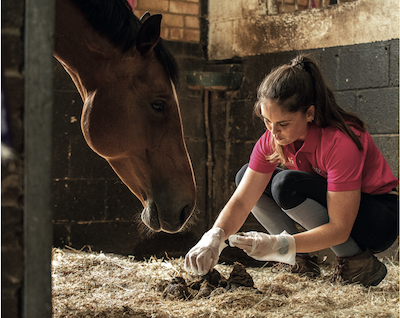
Ultimately, more horses will die from parasite overwhelm through conditions such as larval cyathastominosis. A whole heap of additional stress for everyone concerned and certainly not a way to keep or attract new clients as word on the cause gets out!
Without effective treatments the way to minimise parasite infection and therefore disease risk on these establishments is to restrict horses’ grazing time and drastically reduce stocking densities to lower infection potential in the hope of preventing disease. This in turn will impact the economics of yards who will need to increase prices to maintain business viability with fewer horses.
If this isn’t tenable then the alternative, but in most cases no less difficult or costly option, will be to relocate to new grazing land. An unattractive proposition when many equine businesses have developed and invested in their facilities over generations, and which often serve as well-loved family homes in addition to a livelihood.
RELIANCE ON IVERMECTIN & MOXIDECTIN
Larval cyasthasominosis, a severe colic brought about by mass emergence of inhibited small redworm larvae from within the gut wall of the large intestine, is a particularly traumatic experience for horse and humans. Even without resistance, the condition is difficult to treat and has a high fatality rate.
Anecdotal reports of horse deaths from this condition caused by resistance to treatment rather than inappropriate management have been rising over the last few years.
Preventative management of the small redworm challenge to avoid mass emergence is therefore much preferable. With resistance to fenbendazole and pyrantel in small redworm populations being well documented we have come to rely on ivermectin and moxidectin products, the latter being a particularly key medicine given its ability to impact larval as well as adult stages of cyathastomins.
Our reliance has come at a cost, and we have been witnessing a decline of efficacy in these macrocyclic lactones over the past three decades. Egg reappearance times for small redworm, widely thought to be the first indicator of reduced efficacy, have shortened substantially in this time.
Ivermectin that originally suppressed cyathastomin egg output in the 8–10 week and moxidectin in the 12–16-week range have more recently been found at 4–5 weeks for both actives in several published studies, indicative of their declining efficacy in recent years.
WHY STUD FARMS SPEARHEAD A THREAT TO THE WIDER INDUSTRY
So, the emergence of resistance is more a fulfilment of prophecy rather than direct revelation. UK findings come hot on the heels of a research paper published in 2020 (Nielsen et al.,) that found resistant parasites in Thoroughbred yearlings at a USA stud recently imported from Ireland.
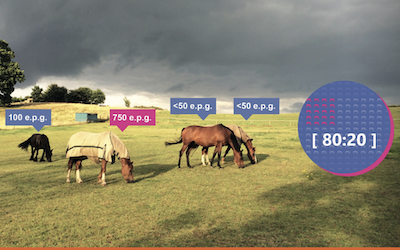
As well as indicating resistance as a global issue, this also serves to highlight how transmissible the problem is; regular movements of horses are surely contributing to the rapid spread of multi-drug-resistant cyathostomins, no export papers necessary!
“This finding is of great concern given the significant movement of Thoroughbreds for both breeding and training,
the intensity with which the macrocyclic lactones are used by Thoroughbred studs and the lack of new anthelmintics coming to the market for equine use.” (Bull et al.,)
A sobering warning indeed. Stud farms and facilities are particularly at risk as young horses are naturally more susceptible to parasite infection and therefore need more treatment than their adult counterparts.
Without change, stud farms in particular spearhead this threat. This is not necessarily a suggestion of negligence or irresponsible treatment regimens but rather circumstance borne of the need to target a wider range of parasites more frequently in youngsters, which in turn favours faster development of a resistant population on these premises.
Horses that go onto new homes from pastures with resistant parasites carry these strains with them. Their eggs are released in the dung into the new environments, quickly infecting the new grazing, spreading their genetic invincibility, and exposing new field companions to these multi-drug resistant worms.
MITIGATING THE IMPACTS OF RESISTANCE BY LOOKING FOR TROUBLE
The development of multi drug resistant parasites means we can no longer give a wormer and expect it to work; most equine premises will have some level of resistance, but how much?
The only way to mitigate its effects is to target parasite control, maximise management techniques and to test for resistance on a regular basis to help safeguard our horses and grazing into the future.
- All horses over 7-8 months should receive regular worm egg counts (to detect adult redworm and ascarid every 8-12 weeks depending on risk) and EquiSal tapeworm tests (to detect tapeworm every 6 months) with treatments targeted only those who need them.
- Carry out reduction tests (a second worm egg count taken 10-14 days after treatment) to monitor levels of resistance and ensure treatments have been effective.
- Worm egg count foals every 6-8 weeks between the ages of two months to eight months old AND treat proactively alternating fenbendazole and pyrantel chemicals to target ascarid and redworm, reduction testing where necessary. After this time move to a test-based programme, introducing EquiSal testing once weaned.
- In the late autumn/winter blood test suitable horses and/or treat all horses for the possibility of encysted redworm with timing dependent on the weather and the age of the foal in youngsters.
- Strongyloides westeri, a parasite that can be passed to foals through mare’s milk, is now thought to be a minimal disease risk. Advice is not to treat mares before foaling unless there is a prior history of related disease at the stud to preserve key medicines.
MANAGEMENT
Wherever possible, our aim is to rely on mechanical means, rather than chemicals to break the lifecycle of the parasites. Not only will this slow resistance but it’s better for our horses and the environment too as wormers are toxic to many flora and fauna.
- Poo-pick at least twice a week to remove any worm eggs present in the dung before they hatch and contaminate the field.
- Rest and rotate fields to allow worm eggs and larvae to die off and lower infection levels on the pasture.
- Change youngstock and nursery pastures annually to avoid the build-up of ascarid eggs which are very resilient in the environment and can stay for up to 10 years.
- Cross graze with sheep, cattle or other animals – as parasites are species specific the larvae they ingest will not survive.
- Keep muck heaps separate from grazing areas.
- Parasites should be thought of in the same way as any other contagious disease such as strangles, Equine Flu or Herpes. New horses should be quarantined and tested before allowing them to graze to ensure they aren’t bringing in unwanted burdens.
Implementing these simple steps will give us the best chance of slowing resistance, preserving our ability to keep horses on our current premises and safeguarding the future of our horses and our equine facilities for as long as possible.
Without doing so we face an epidemic of multi resistant parasite strains and its accompanied heartaches within a few short years.
References
K.E. Bull, K.J. Allen, J.E. Hodgkinson, L.E. Peachey (2023), ‘The first report of macrocyclic lactone resistant cyathostomins in the UK’, International Journal for Parasitology, Volume 21, April 2023, Pages 125-130
M.K. Nielsen, M. Banahan, R.M. Kaplan (2020), ‘Importation of Macrocyclic Lactone Resistant Cyathostomins on a US Thoroughbred Farm’, International Journal of Parasitology, 14 pp. 99-104
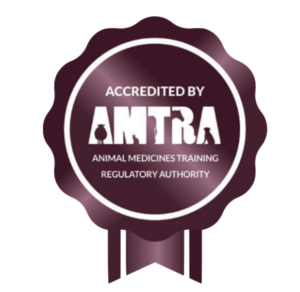
ABOUT ETN’S RAMA/SQP FEATURES
ETN’s series of CPD features helps RAMAs (Registered Animal Medicines Advisors/SQPs) earn the CPD (continuing professional development) points they need. The features are accredited by AMTRA, and highlight some of the most important subject areas for RAMAs/ SQPs specialising in equine and companion animal medicine.
AMTRA is required by the Veterinary Medicines Regulations to ensure its RAMAs/SQPs undertake CPD. All RAMAs/SQPs must earn a certain number of CPD points in a given period of time in order to retain their qualification. RAMAs/SQPs who read this feature and submit correct answers to the questions below will receive two CPD points. For more about AMTRA and becoming a RAMA/SQP, visit www.amtra.org.uk










